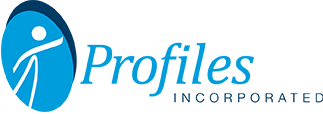Posted by on April 29, 2024.

Making the wrong hiring decision can be incredibly costly. The U.S. Department of Labor estimate the cost of a bad hire can be up to 30% of a first-year salary and up to 50% for managerial roles. When companies are in growth mode, it can be tempting to justify or write off these costs as unavoidable inefficiencies, and therein lies an opportunity. HR professionals can differentiate themselves by ensuring they hire for success from the get-go. When the job market slows, however, hiring for success becomes critical.
At a basic level, making the wrong hiring decision often means the job won’t get done as well as you want it to get done. Maybe the new hire really wasn’t as well-qualified as you thought, or perhaps, the internal promotion isn’t a good personality fit for their new team, and now you’re seeing mediocre job performance.
Harvard Business Review has reported that employees who are a good fit for a job are more than twice as productive as those who are not a good fit. In other words, a poor hiring choice means you’re likely missing out on a lot of potential productivity.
Productivity and Job Fit

Whether you are hiring a new candidate or promoting from within, your decision needs to be based on objective and data-driven information, as opposed to just a gut feeling. It’s tricky to make the right decision, but don’t worry, we’ll explain how to ensure everyone within your organization works in a job they’re well suited for and love.
Going on a Gut Feeling
Understandably, no one sets out to make a lousy hiring decision. But the fact is, hiring can be a guessing game if you’re approaching it with inadequate data and without the right tools. Resumes and interviews only really give you a snapshot of someone’s experience and training. They are essentially a highlight reel of that person’s career.
So, how can you determine a candidate’s future performance in terms of how will they cope with the cognitive challenges of the job, their key behaviors that will impact how they perform the job and interact with others, and their interests and motivations?
Even a skilled interviewer with the best set of questions may not dig as deeply as necessary into the characteristics that make the person the best fit for the job. What often happens is that a gut feeling drives the final choice.
One Princeton University study found forming a first impression about a stranger takes only a tenth of a second, and a CareerBuilder study found half of all hiring managers make a decision within the first five minutes of an interview.
You probably wouldn’t want to handle your investment portfolio on a gut feeling, so why should hiring and selection decisions be any different? The bottom line is that your hires are enormous investments, in both time and money, and they promise incredible returns, but only if you’ve really done your homework.
Finding the Right Fit
This is where the Job Fit approach to hiring and selection comes into play. And it’s your ticket to reducing turnover, replicating top talent, and discovering the next generation of leaders.
Job Fit measures the congruity between an open position and a candidate’s innate talents and tendencies. It’s measured by three key areas: cognitive abilities or thinking style, behavioral traits, and the candidate’s interest in a job and work environment. Establishing Job Fit helps you place new hires into positions where they’re likely to do well and perform at their full potential. The Job Fit approach helps you see beyond the resume and interview, taking a deeper look into personality traits, abilities, and behaviors. It helps determine:
- If the candidate can do the job
- How well the candidate will do the job
- Whether the candidate will enjoy the job
All three of these factors are vital for success. The job must match the employee’s abilities, provide stimulation that connects with the employee’s interests, and the cultural demands of the workplace must match the employee’s personality.
Make all that happen, and productivity will be far higher, while turnover will be far lower. Job satisfaction will increase, job stress will decrease, and there is bound to be less workplace conflict. You’ll save money, too, when you make the best decision from the start.
So, how can you start implementing the Job Fit approach into your hiring and selection process? Use a Job Fit assessment.
These data-driven assessments help you measure and better understand what core characteristics are needed to succeed in a particular role and how candidates compare against your requirements. Will they be able to perform at your expected level? What are their strengths and possible pitfalls?

With this level of understanding, your talent acquisition team and hiring managers can better predict a person’s job suitability, making better matches between people and jobs. This data-driven approach increases consistency in the hiring process and, ultimately, success.
Let’s Connect! With PXT Select™, you’ll have a powerful tool to help you master the art of Job Fit, helping you make data-driven hiring decisions that drive results. To learn more about the power of Job Fit and how to achieve it in your hiring practices, contact Profiles Incorporated at:


Nancy Ness
952-975-1955
nancyness@profilesincorporated.com
www.profilesincorporated.com
